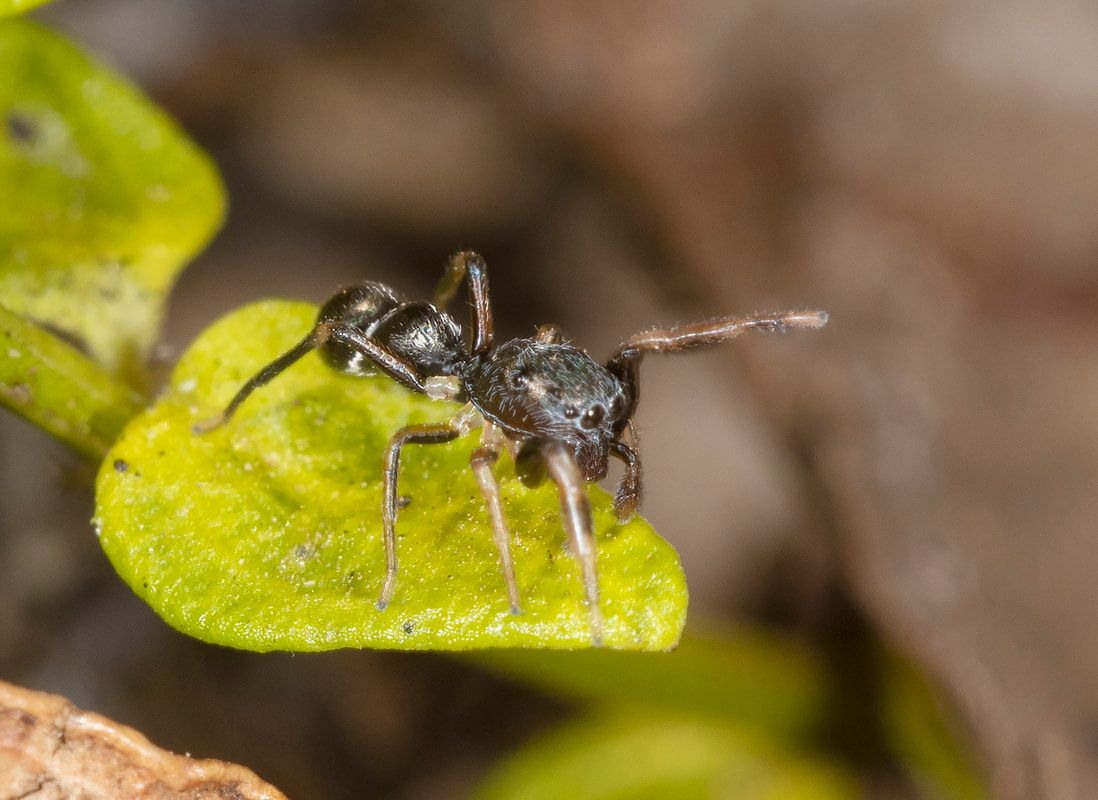Ant-mimic Spider
Myrmarachne
Myrmarachne is an ant-mimicking genus with several hundred species in a world-wide distribution. There are seventeen Australian species. Myrmarachne spp. have been collected from foliage, including grass, from under bark and in litter in savannah woodland, open forest and rainforest.
Each species is a highly effective mimic of an ant taxon; sometimes more than one ant taxon at different spider instars. They often run on three pairs of legs while holding and waving the first pair of legs in a manner similar to the antennae of ants and run in a jerky, stop-start, ant-like style, rarely using their safety line of silk.
Each species is a highly effective mimic of an ant taxon; sometimes more than one ant taxon at different spider instars. They often run on three pairs of legs while holding and waving the first pair of legs in a manner similar to the antennae of ants and run in a jerky, stop-start, ant-like style, rarely using their safety line of silk.
Fun Fact:
Mimicry is the ability that some living beings have to resemble others. Many animals take on the appearance of others for various reasons: to appear dangerous when they really aren’t, to attract certain living beings for reproductive purposes, or to divert predators’ attention to other parts of their bodies, for example. This evolutionary strategy is widespread in nature.
Mimicry is the ability that some living beings have to resemble others. Many animals take on the appearance of others for various reasons: to appear dangerous when they really aren’t, to attract certain living beings for reproductive purposes, or to divert predators’ attention to other parts of their bodies, for example. This evolutionary strategy is widespread in nature.
We acknowledge the Minang and Koreng people as the traditional custodians of the land on which we work and live. We pay our respects to the Elders, past, present, and emerging and to the wider Noongar community.
Sponsors and Supporters












